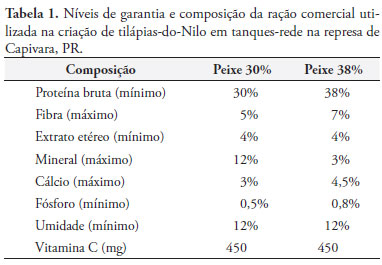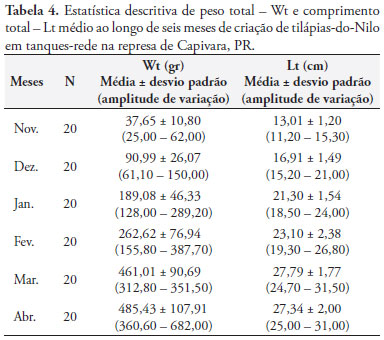Tilapias are fish originally from Africa which nowadays are commercially bred in almost 100 countries, being one of the most commercially bred species in the world. In this work the trematode population of the monogenoidea group present in the branchiae of Nile tilapias bred in 4 net-ponds with volume of 4 m3 each, was monitored during 5 months. The juvenile fish, presenting initial average weight of 37.65 g originated from other piscicultures, were stocked in the density of 250 animals.m-3 and monthly monitored until their commercialization, with final average weight of 485.4 g. The prevalence of these ectoparisites was high, between 90 and 100% in all months. The highest values of average intensity of infestation - AII and average abundance of infection - AAI occurred during the 2 first months of captivity, presenting a new increase in the last month of breeding. The only monogenoidea group present in the branchiae of the animals examined belonged to the Dactylogyridae family. The values of the dissolved oxygen, temperature, pH, nitrite and ammonia were within normal rate. In these conditions there were no significant differences between the relative condition factor - Kn among the parasited and non-parasited animals and also in the different levels of infestation, showing that, in these breeding conditions, the relationship parasite-host-environment presented itself in balance without causing great harm to the animals.
Oreochromis niloticus; Monogenoidea; Nile tilapia; net-ponds; ectoparasites










